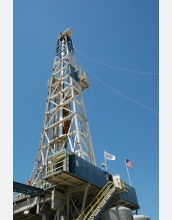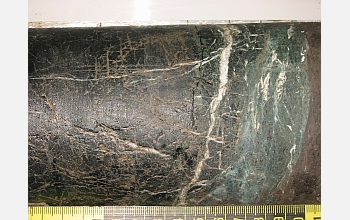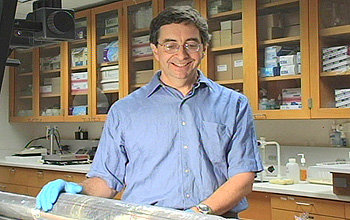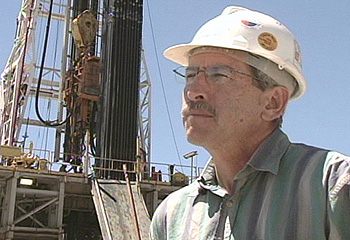All Images
News Release 07-132
Geologists Recover Rocks From San Andreas Fault
Scientists drill into earthquake zone 10,000-plus feet beneath Earth's surface
This material is available primarily for archival purposes. Telephone numbers or other contact information may be out of date; please see current contact information at media contacts.

For the first time, geologists have drilled into the San Andreas Fault.
Credit: Zina Deretsky, National Science Foundation
Download the high-resolution JPG version of the image. (827 KB)
Use your mouse to right-click (Mac users may need to Ctrl-click) the link above and choose the option that will save the file or target to your computer.

This drilling rig was used to retrieve samples of rock from the San Andreas Fault.
Credit: EarthScope
Download the high-resolution JPG version of the image. (2.8 MB)
Use your mouse to right-click (Mac users may need to Ctrl-click) the link above and choose the option that will save the file or target to your computer.

The green rock on the right, called serpentinite, is a strand of the San Andreas fault.
Credit: EarthScope
Download the high-resolution JPG version of the image. (1.6 MB)
Use your mouse to right-click (Mac users may need to Ctrl-click) the link above and choose the option that will save the file or target to your computer.

View Video
Kaye Shedlock, NSF EarthScope program director, comments on EarthScope and the SAFOD project.
Credit: National Science Foundation/Stanford

View Video
Steve Hickman, a geophysicist with the U.S. Geological Survey (USGS), describes the core sample retrieved from the San Andreas Fault.
Credit: National Science Foundation/Stanford

View Video
Mark Zoback of Stanford University describes the current phase of drilling through the San Andreas Fault.
Credit: National Science Foundation/Stanford


